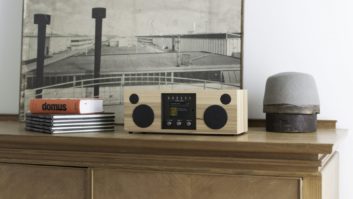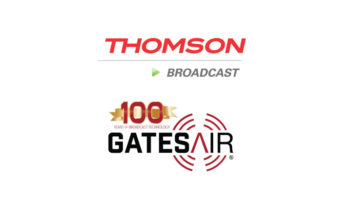Hal Kneller, engineering consultant with Solmart Media, writes that he has maintained a clone (not an image) of all the hard drives in critical systems at the radio stations he consults over the last few years. This way, when there is a crash, there is an instantly bootable drive to slip in. Once that is all done, Hal re-clones the drive to make sure there is a good backup.
Fig. 1 shows a completed clone, ready to go to work.

Of course, Hal refreshes the clones at least once every six months to make sure the computers are reasonably current. This procedure saves reloading programs and redoing a lot of configuration.
On a very frequent basis, data backup is necessary, otherwise the drive will not contain the latest data files. Plus you’ll notice there are clones for the NexGen automation system.
Although the on-air systems use RAID Mirror (two drives) and are immune to a single drive failure, they are not immune to human error or some type of virus or anything that could cause the disks not to be able to be used.
Thus, the clone sets up the stations for for quick recovery. Although Hal never had a drive crash in the on-air systems, several of the other systems, such as the streaming computer and production computers (which do not use RAID) have had disk crashes. One hosed itself upon a Windows 10 update, but the clone rescued Hal from a lot of work.
The program Hal uses, and which has been very reliable, is free. It’s EasUS Data Recovery Wizard v. 12 (current version): https://www.easeus.com/datarecoverywizard/free-data-recovery-software.htm.
The company, of course, will try to sell you upgrades; but the free version works just fine, Hal says.
Hal also has several other of their utilities he finds handy for adjusting, creating or deleting partitions. One such tool allows you to take a Windows bootable disk to another computer with different hardware. Hal has used this when upgrading computers and it saves reloading everything — especially when you are dealing with the complications of a program automation system with lots and lots of configurations.
There are other such utilities on the market, free or paid. Hal just happened on this some years ago and has been happy with its performance.
***
From Montana’s Wolfram Engineering, Gregory Muir comments on the simple temperature sensor circuit provided by Steve Minshall and Cris Alexander of Crawford Broadcasting (RW Sept. 15 issue).
Greg wanted to mention that there are also many solid-state temperature sensors in IC form that have voltage outputs calibrated to the temperature being measured. These devices are in use in many transmitter products to measure internal cabinet, stack exhaust or heat sink temperatures.
Many of the devices are in a simple little epoxy three-lead transistor case and ask for +5 volts and ground in order to operate. The output is on the third lead.
A nice summary of many — but not all — relevant devices can be found on Wikipedia (search for “list of temperature sensors”). Otherwise, one can check many of the major websites of the manufacturers who make these devices, also listed on the Wikipedia page.
Most of the devices are calibrated in millivolts per degree centigrade, and range from around 10 mV per degree C upwards to volts per degree. Measurement temperature range can extend from subzero to more heat than one chooses to see at a transmitter site. If voltage range is a problem, a simple single-supply op-amp solution can be used to boost the voltage output to what is needed by the remote control.
What’s most attractive about these sensors is not only their calibrated outputs, but also their price. Some start in the $1.50 range!

***
Mark Voris, director of engineering for Spirit Catholic Radio’s cluster in Nebraska, sent in Fig. 2. It shows one of his termination cabinets after his AoIP studio installation. Gone are most of the punch blocks and multi-pair wire.
Mark can fill you in on some of the other benefits AoIP has brought to his station network. You can reach him at [email protected].
***
Dan Slentz writes that anyone who has ever used “community” headsets in a studio can’t help but notice how “nasty” they can get.
Dan stopped using community headsets years ago, but for the germo-phobic engineer or PD who has no alternative, or for studios which have frequent guests using shared headphones, here’s a clever item Dan stumbled upon: disposable earmuff-style headphone covers.
Linhuipad 12cm Replacement Non-woven Sanitary Headphone Covers come in a 100-piece package. They are available for less than $15 from AliExpress. Enter “Linhuipad sanitary headphone covers” in the search box.
At less than 20 cents a pop, they are a good and inexpensive investment.
Contribute to Workbench. You’ll fellow engineers and qualify for SBE recertification credit. Send Workbench tips and high-resolution photos to [email protected]. Fax to (603) 472-4944.
Author John Bisset has spent 48 years in the broadcasting industry and is still learning. He handles Western U.S. radio sales for the Telos Alliance. He is SBE certified and is a past recipient of the SBE’s Educator of the Year Award.












